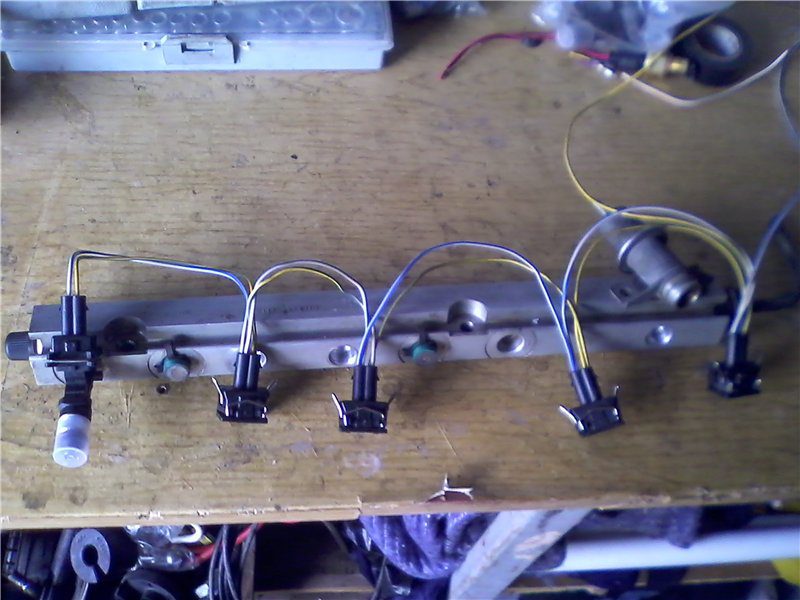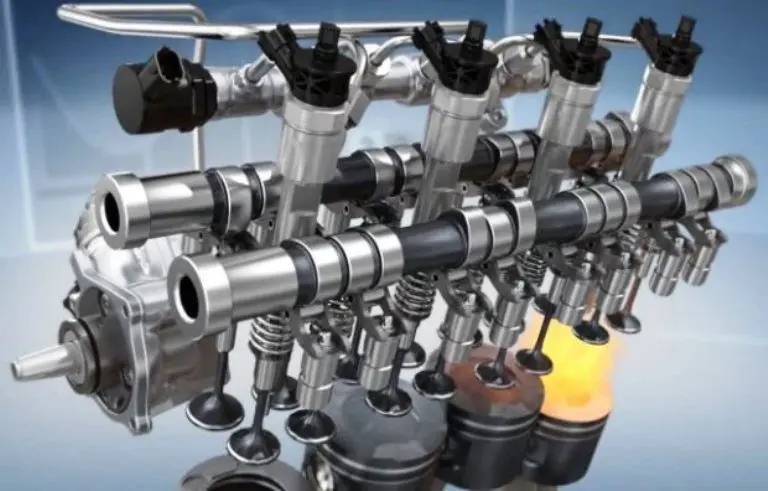
How the MPI Multiport Fuel Injection System Works
Content
There is no system in a car that is not needed. But if we conditionally divide them into main and secondary ones, then the first category will include fuel, ignition, cooling, lubricants. Each internal combustion engine will have one or another modification of the listed systems.
True, if we talk about the ignition system (about its structure and what principle of operation it has, it is told here), then it is received only by a gasoline engine or an analogue that is capable of running on gas. A diesel engine does not have this system, but igniting the air / fuel mixture is similar. The ECU determines the moment when this process needs to be activated. The only difference is that instead of a spark, a portion of the fuel is fed into the cylinder. From the high temperature of the air strongly compressed in the cylinder, the diesel fuel begins to burn.
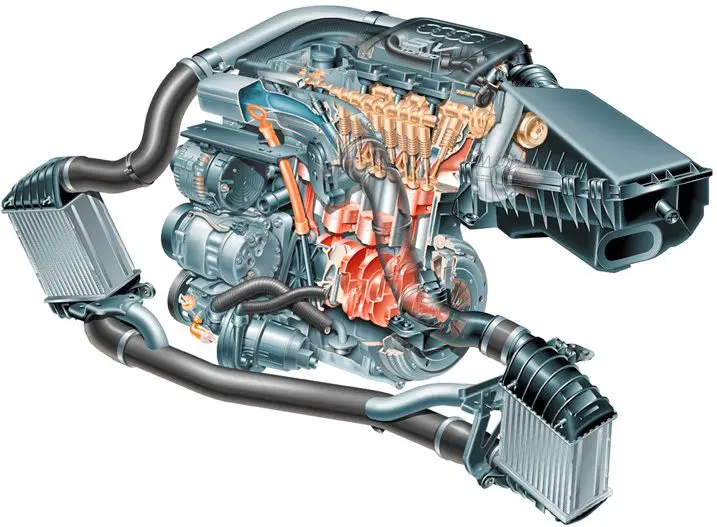
The fuel system can have both mono injection (a point method of petrol spraying) and distributed injection. Details about the difference between these modifications, as well as about other analogs of injection are described in a separate review... Now we will focus on one of the most common developments, which is received not only by budget cars, but also by many models of the premium segment, as well as sports cars running on gasoline (the diesel engine uses exclusively direct injection).
This is a multi-point injection or MPI system. We will discuss the device of this modification, what is the difference between it and direct injection, as well as what are its advantages and disadvantages.
The basic principle of the MPI system
Before understanding the terminology and operating principle, it should be clarified that the MPI system is installed exclusively on the injector. Therefore, those who are considering the possibility of upgrading their carburetor ICE should consider using other methods of garage tuning.
In the European market, car models with MPI markings on the powertrain are not uncommon. This is an abbreviation for multi-point-injection or multi-point fuel injection.
The very first injector replaced the carburetor, due to which the control of the enrichment of the air-fuel mixture and the quality of filling the cylinders is no longer carried out by mechanical devices, but by electronics. The introduction of electronic devices is primarily due to the fact that mechanical devices have certain limitations in terms of fine-tuning systems.
Electronics copes with this task much more efficiently. Plus, the service for such cars is not so frequent, and in many cases it comes down to computer diagnostics and resetting of detected errors (this procedure is described in detail here).

Now let's look at the principle of operation, according to which fuel is sprayed to form VTS. Unlike mono injection (considered an evolutionary modification of the carburetor), the distributed system is equipped with an individual nozzle for each cylinder. Today, another effective scheme is compared with it - direct injection for gasoline internal combustion engines (there is no alternative in diesel units - in them diesel fuel is sprayed directly into the cylinder at the end of the compression stroke).
For the operation of the fuel system, the electronic control unit collects data from many sensors (their number depends on the type of vehicle). The key sensor, without which no modern vehicle will work, is the crankshaft position sensor (it is described in detail in another review).
In such a system, fuel is supplied to the injector under pressure. Spraying occurs into the intake manifold (for details on the intake system, read here) as with the carburetor. Only the distribution and mixing of fuel with air occurs much closer to the intake valves of the gas distribution mechanism.
When a certain sensor fails, a certain emergency mode algorithm is activated in the control unit (which one depends on the broken sensor). At the same time, the Check Engine message or the engine icon lights up on the dashboard of the car.
Multipoint injection system design
The operation of multiport multipoint injection is inextricably linked to the supply of air, as in other fuel systems. The reason is that gasoline mixes with air in the intake tract, and so that it does not settle on the walls of the pipes, the electronics monitors the position of the throttle valve, and in accordance with the flow rate, the injector will inject a certain amount of fuel.
The MPI fuel system drawing will consist of:
- Throttle body;
- Fuel rail (a line that makes it possible to distribute gasoline to injectors);
- Injectors (their number is identical to the number of cylinders in the engine design);
- sensor DFID;
- Gasoline pressure regulator.
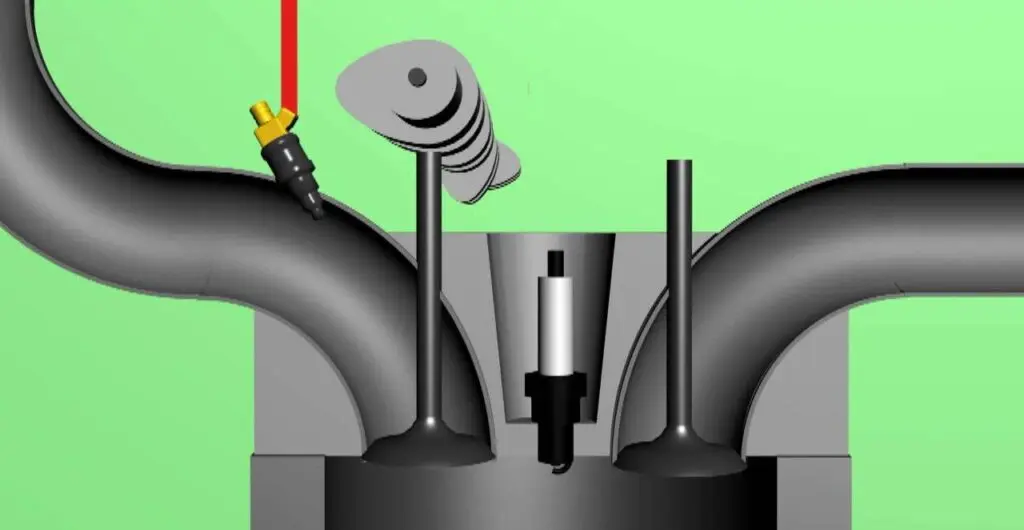
All components work according to the following scheme. When the intake valve opens, the piston performs an intake stroke (moves to bottom dead center). Due to this, a vacuum is created in the cylinder cavity, and air is sucked from the intake manifold. The flow moves through the filter, and also passes near the mass air flow sensor and through the throttle cavity (for more details about its function, see in another article).
In order for the vehicle circuit to function, gasoline is injected into the flow in parallel with this process. The nozzle is designed in such a way that the portion is sprayed onto the mist, which ensures the most efficient preparation of BTC. The better the fuel mixes with air, the more efficient combustion will be, as well as less stress on the exhaust system, the key component of which is the catalytic converter (for why every modern car is equipped with it, read here).
When small droplets of gasoline enter a hot environment, they evaporate more intensively and mix more effectively with air. The vapors ignite much faster, which means that the exhaust contains less toxic substances.
All injectors are electromagnetically driven. They are connected to a line through which fuel is supplied under high pressure. The ramp in this scheme is needed so that a certain amount of fuel accumulates in its cavity. Thanks to this margin, different action of the nozzles is provided, ranging from constant and ending with multi-layer. Depending on the type of vehicle, engineers can implement different types of fuel delivery for each operating cycle of the engine.
So that in the process of constant operation of the gasoline pump, the pressure in the line does not exceed the maximum permissible parameter, there is a pressure regulator in the ramp device. How it works, as well as what elements it consists of, read separately... The excess fuel is discharged through the return line to the gas tank. A similar operating principle has a CommonRail fuel system, which is installed on many modern diesel units (it is described in detail here).
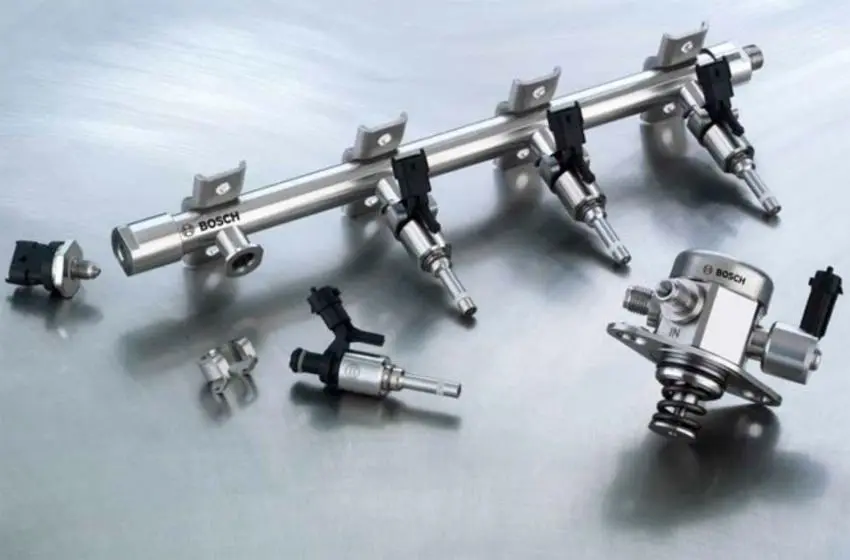
Gasoline enters the rail through the fuel pump, and there it is sucked in through the filter from the gas tank. The distributed injection type has an important feature. The nozzle atomizer is mounted as close as possible to the inlet valves.
No vehicle will work without the XX regulator. This element is installed in the range of the throttle valve. In different car models, the design of this device may differ. Basically it is a small clutch with an electric motor. It is connected to the bypass of the intake system. When the throttle is closed, a small amount of air must be supplied to prevent the engine from stalling. The microcircuit of the control unit is adjusted so that the electronics are able to independently regulate the engine speed, depending on the situation. A cold and a heated unit requires its own proportion of the air-fuel mixture, so the electronics adjusts different rpm XX.
As an additional device, a gasoline consumption sensor is installed in many vehicles. This element sends impulses to the trip computer (on average, there are about 16 thousand such signals per liter). This information is not as accurate as possible, as it appears on the basis of fixing the frequency and response time of the sprayers. To compensate for the calculation error, the software uses an empirical measurement factor. Thanks to this data, the average fuel consumption is displayed on the on-board computer screen in the car, and in some models it is determined how much the car will travel in the current mode. This data helps the driver to plan the intervals between refueling the vehicle.
Another system combined with the operation of the injector is an adsorber. Read more about it separately... In short, it allows you to maintain the pressure in the gas tank at atmospheric level, and gasoline vapors are burned in the cylinders during the operation of the power unit.
MPI operating modes
Distributed injection can operate in different modes. It all depends on the software that is installed in the microprocessor of the control unit, as well as on the modifications of the injectors. Each type of gasoline spraying has its own characteristics of work. In short, the work of each of them boils down to the following:
- Simultaneous injection mode. This type of injector has not been used for a long time. The principle is as follows. The microprocessor is configured to simultaneously spray gasoline into all cylinders simultaneously. The system is configured so that at the start of the intake stroke in one of the cylinders, the injector will inject fuel into all the intake manifold pipes. The disadvantage of this scheme is that the 4-stroke motor will operate from the sequential actuation of the cylinders. When one piston completes the intake stroke, a different process (compression, stroke and exhaust) operates in the rest, so fuel is needed exclusively for one boiler for the entire engine cycle. The rest of the gasoline was simply in the intake manifold until the corresponding valve opened. Such a system was used in the 70s and 80s of the last century. In those days, gasoline was cheap, so very few people bothered about its overspending. Also, due to excessive enrichment, the mixture did not always burn well, and therefore a large amount of harmful substances was emitted into the atmosphere.

- Pairwise mode. In this case, engineers have reduced fuel consumption by reducing the number of cylinders that simultaneously receive the required portion of gasoline. Thanks to this improvement, it turned out to reduce harmful emissions, as well as fuel consumption.
- Sequential mode or distribution of fuel in the timing phases. On modern cars that receive a distribution type of fuel system, this scheme is used. In this case, the electronic control unit will control each injector separately. To make the combustion process of the BTC as efficient as possible, the electronics provide a slight advance of the injection before the intake valve opens. Thanks to this, a ready-made mixture of air and fuel enters the cylinder. Spraying is done through one nozzle per complete motor cycle. In a four-cylinder internal combustion engine, the fuel system operates identically to the ignition system, usually in a 1/3/4/2 sequence.

The latter system has established itself as a decent economy, as well as a high environmental friendliness. For this reason, various modifications are being developed to improve petrol injection, which are based on the principle of operation of phased distribution.
Bosch is the leading manufacturer of fuel injection systems for petrol injection. The product range includes three types of vehicles:
- K-Jetronic... It is a mechanical system that distributes gasoline to the nozzles. It works continuously. In vehicles produced by the BMW concern, such motors had the abbreviation MFI.
- TO-Jetronic... This system is a modification of the previous one, only the process is controlled electronically.
- L-Jetronic... This modification is equipped with mdp-injectors that provide impulse fuel supply at a specific pressure. The peculiarity of this modification is that the operation of each nozzle is adjusted depending on the settings programmed into the ECU.
Multipoint injection test
Violation of the gasoline supply scheme occurs due to the failure of one of the elements. Here are the symptoms that can be used to recognize a malfunction of the injection system:
- The engine starts with great difficulty. In more critical situations, the engine will not start at all.
- Unstable operation of the power unit, especially at idle.
It should be noted that these "symptoms" are not specific to the injector. Similar problems occur in case of malfunctions with the ignition system. Usually, computer diagnostics help in such situations. This procedure allows you to quickly identify the source of the malfunction that is causing the multipoint injection to be ineffective.
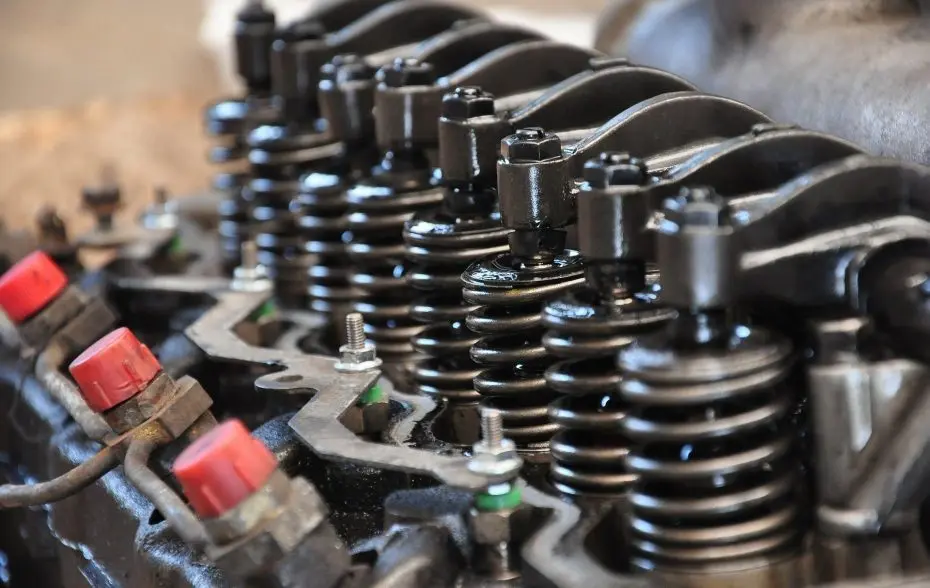
In most cases, a specialist simply clears errors that prevent the control unit from correctly adjusting the operation of the power unit. If computer diagnostics showed a breakdown or incorrect operation of the spraying mechanisms, then before starting to search for a failed element, it is necessary to eliminate the high pressure in the line. To do this, it is enough to disconnect the negative terminal of the battery, and loosen the fastening nut in the line.
There is another way to lower the head in the line. For this, the fuel pump fuse is disconnected. Then the motor starts and runs until it stalls. In this case, the unit itself will work out the pressure of the fuel in the rail. At the end of the procedure, the fuse is installed in its place.
The system itself is checked in the following sequence:
- A visual inspection of the electrical wiring is carried out - there is no oxidation on the contacts or damage to the cable insulation. Due to such malfunctions, power may not be supplied to the actuators, and the system either stops working or is unstable.
- The condition of the air filter plays an important role in the operation of the fuel system, so it is important to check it.
- Spark plugs are checked. By the soot on their electrodes, you can recognize hidden problems (read more about this separately) systems on which the operation of the power unit depends.
- Compression in the cylinders is checked. Even if the fuel system is good, the engine will be less dynamic at low compression. How this parameter is checked is separate review.
- In parallel with the vehicle diagnostics, it is necessary to check the ignition, namely, whether the UOZ is correctly set.
After the problems with the injection have been eliminated, you need to adjust it. This is how the procedure is performed.
Multipoint injection adjustment
Before considering the principle of injection adjustment, it is worth considering that each modification of the vehicle has its own subtleties of work. Therefore, the system can be configured in different ways. This is how the procedure is performed for the most common modifications.
Bosch L3.1, MP3.1
Before proceeding with setting up such a system, you need to:
- Check the ignition condition. If necessary, worn-out parts are replaced with new ones;
- Make sure that the throttle is working properly;
- A clean air filter is installed;
- The motor is warming up (until the fan turns on).
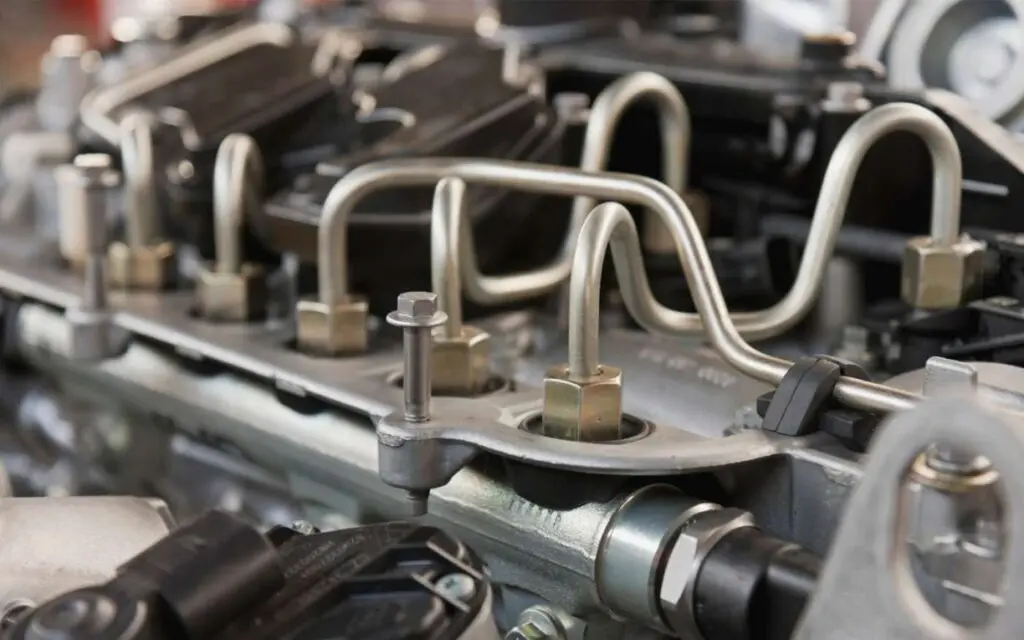
First, the idle speed is adjusted. For this, there is a special adjusting screw on the throttle. If you turn it clockwise (twisted), then the speed indicator XX will decrease. Otherwise, it will increase.
In accordance with the manufacturer's recommendations, exhaust quality analyzers are installed on the system. Next, the plug is removed from the air supply adjusting screw. By turning this element, the composition of the BTC is adjusted, which will be indicated by the exhaust gas analyzer.
Bosch ML4.1
In this case, idle is not set. Instead, the device mentioned in the previous overview is connected to the system. According to the condition of the exhaust gases, the multi-point spray operation is adjusted using the adjusting screw. When the hand turns the screw clockwise, the CO composition will increase. When turning in the other direction, this indicator decreases.
Bosch LU 2 Jetronic
Such a system is regulated to the speed of XX in the same way as the first modification. The mixture enrichment setting is carried out using the algorithms embedded in the microprocessor of the control unit. This parameter is adjusted in accordance with the pulses of the lambda probe (for more information about the device and its principle of operation, read separately).
Bosch Motronic M1.3
The idle speed in such a system is regulated only if the gas distribution mechanism has 8 valves (4 for inlet, 4 for outlet). In 16-valve valves, XX is adjusted by the electronic control unit.
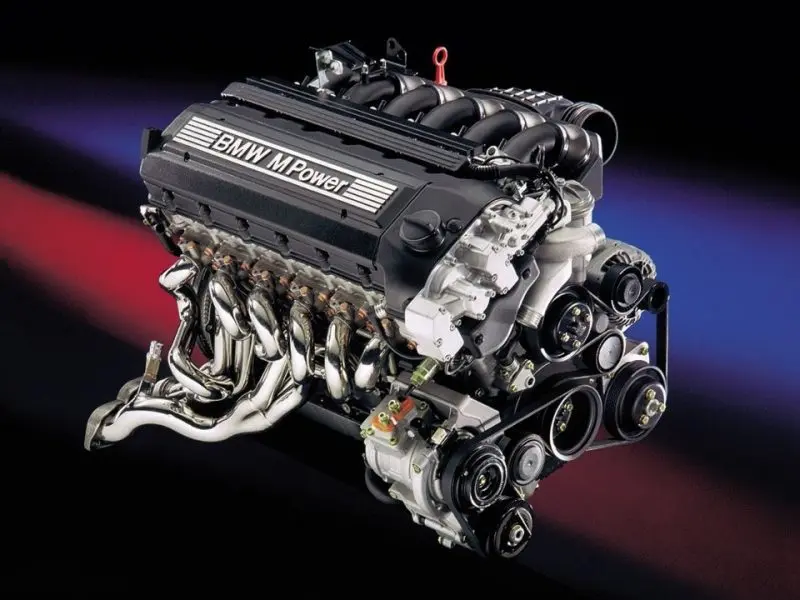
The 8-valve valve is regulated in the same way as the previous modifications:
- XX is adjusted with a screw on the throttle;
- The CO analyzer is connected;
- With the help of an adjusting screw, the composition of the BTC is adjusted.
Some cars are equipped with a system such as:
- MM8R;
- Bosch Motronic 5.1;
- Bosch Motronic 3.2;
- Sagem-Luke 4GJ.
In these cases, it will not be possible to adjust either the idle speed or the composition of the air-fuel mixture. The manufacturer of such modifications did not foresee this possibility. All work must be done by the ECU. If the electronics could not adjust the injection operation correctly, then there are some system errors or breakdowns. They can only be identified through diagnosis. In the most difficult situations, the incorrect operation of the vehicle is caused by a breakdown of the control unit.
Differences of the MPI system
The competitors of MPI engines are modifications such as FSI (developed by the concern VAG). They differ only in the place of fuel atomization. In the first case, injection is carried out in front of the valve at the moment when the piston of a particular cylinder begins to perform the intake stroke. The atomizer is mounted in a branch pipe that goes to a specific cylinder. The air-fuel mixture is prepared in the manifold cavity. When the driver presses the gas pedal, the throttle valve opens in accordance with the effort.
As soon as the air flow reaches the area of action of the atomizer, petrol is injected. You can read more about the device of electromagnetic injectors. here... The socket of the device is made so that a portion of gasoline is distributed into the smallest fractions, which improves mixture formation. When the intake valve is opened, a portion of the BTC enters the working cylinder.
In the second case, an individual injector is relied on for each cylinder, which is installed in the cylinder head next to the spark plugs. In this arrangement, gasoline is sprayed according to the same principle as diesel fuel in a diesel engine. Only the ignition of the VTS occurs not due to the high temperature of highly compressed air, but from an electrical discharge formed between the electrodes of the spark plug.

There is often debate among owners of vehicles in which a distribution and direct injection engine is installed about which unit is the best. At the same time, each of them gives his own reasons. For example, MPI proponents lean toward such a system because it is easier and cheaper to maintain and repair than its FSI-type counterpart.
Direct injection is more expensive to repair, and there are few qualified specialists capable of performing work on a professional level. This system is used with a turbocharger, and the MPI engines are exclusively atmospheric.
Advantages and Disadvantages of Multipoint Injection
The advantages and disadvantages of multipoint injection can be discussed under the prism of comparing this system with direct fuel supply to the cylinders.
The advantages of distributed injection include:
- Significant savings in gasoline when compared with this system, mono injection or carburetor. Also, this motor will meet environmental standards, since the quality of the MTC is much higher.
- Due to the availability of spare parts and a large number of specialists who understand the intricacies of the system, its repair and maintenance is cheaper for the owner than for those who are the happy owner of a car with direct injection.
- This type of fuel system is stable and highly reliable, provided that the driver does not ignore the recommendations for routine maintenance.
- Distributed injection is less demanding on the quality of fuel than the system of direct gasoline supply to the cylinders.
- When VTS forms in the intake tract and passes through the valve head, this part is processed with gasoline and cleaned, so that deposits do not accumulate on the valve, as is often the case in an internal combustion engine with a direct mixture supply.
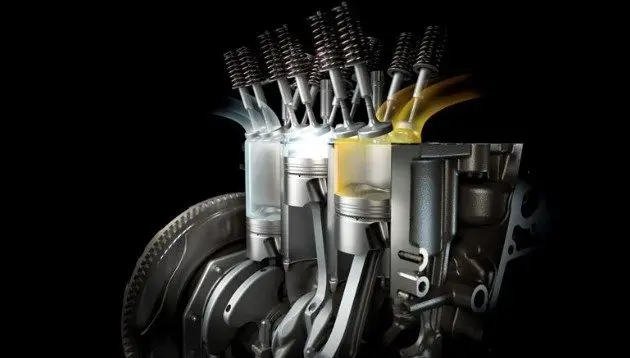
If we talk about the shortcomings of this system, then most of them relate to the comfort of the power unit (thanks to layer-by-layer ignition, which is used in premium systems, the engine vibrates less), as well as the recoil of the internal combustion engine. Engines with direct injection and a displacement identical to the type of engine in question develop more power.
Another disadvantage of MPI is the high cost of repairs and spare parts compared to the previous versions of the vehicle. Electronic systems have a more complex structure, which is why their maintenance is more expensive. Most often, owners of cars with an MPI engine have to deal with cleaning injectors and resetting electrical equipment errors. However, this should also be done by those whose car has a direct injection fuel system.
But when comparing modern injectors, it becomes obvious that due to the direct supply of fuel to the cylinders, the power of the power unit is slightly higher, the exhaust is cleaner, and the fuel consumption is slightly lower. Despite these advantages, such an advanced fuel system will be even more expensive to maintain.
In conclusion, we offer a short video about why many motorists are afraid to purchase a car with direct injection:
Questions and answers:
Which is better direct injection or multipoint injection? Direct injection. It has more fuel pressure, it atomizes better. This gives almost 20% savings and cleaner exhaust (more complete combustion of the BTC).
How does multipoint fuel injection work? An injector is installed on each intake manifold pipe. At the time of the intake stroke, fuel is sprayed. The closer the injector is to the valves, the more efficient the fuel system.
What are the types of fuel injection? In total, there are two fundamentally different types of injection: single injection (one nozzle according to the carburetor principle) and multi-point (distributed or direct.
